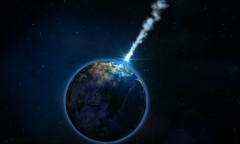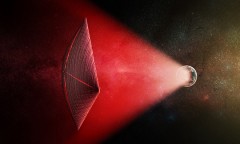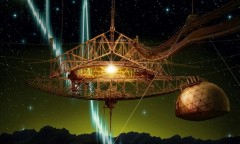By KM Diaz, | May 24, 2017

Australian Square Kilometre Array Pathfinder (ASKAP) was able to detect mysterious new FRB in just three and a half days after observing. (YouTube)
Fast Radio Bursts (FRBs) are believed to occur thousand times a day, but there have only been 30 FRBs detected by the Parkes radio telescope over the past decades. However, an Australian telescope called Australian Square Kilometre Array Pathfinder (ASKAP) was able to detect mysterious new FRB in just three and a half days after observing, though the telescope has not yet fully operated.
Like Us on Facebook
Since ASKAP detects the FRB in a short period of time, astronomers believe that they could now tackle big questions about their source of origin or what causes.
FRBs are considered extremely short, powerful radio waves that only last for few milliseconds. These radio bursts are from billions of light years away, but until now, researchers could not pinpoint their origin or what triggers them to happen.
A lot of theories have emerged on what causes them, from interstellar phenomena to alien megastructures. Also, despite frequent occurrence on space, there have only been few FRBs detected after their first discovery in 2007.
The new FRB, registered as FRB170107, was discovered by CSIRO's Dr. Keith Bannister and several researchers from CSIRO. One of the most impressive things about the latest FRB is that researchers are only using eight out of the 36 dishes of the telescope.
These dishes were arranged in a unique way, all of the 36 dishes are originally focused on a very specific point in space, but the research team focused the eight dishes into different directions.
Dr. Bannister explains that the telescope was transformed into Sauron of space, refers to the dark overlord in Tolkien's "Lord of the Rings." Through this alignment, the team instantly observed a huge FRB in less than four days after being switched on.
Dr. Jean-Pierre Macquart, the co-leader of the project from Curtin University node of ICRAR, also said that their finding of the new FRB became easy as shooting fish in a barrel.
Meanwhile, the FRB170107 appears on the edge of the constellation Leo. It is believed to travel within the space for about six billion years before finally reaching the Earth at the speed of light. The brightness and apparent distance of the burst mean that the energy is enormous, which makes it hard to explain.
-
Use of Coronavirus Pandemic Drones Raises Privacy Concerns: Drones Spread Fear, Local Officials Say

-
Coronavirus Hampers The Delivery Of Lockheed Martin F-35 Stealth Fighters For 2020

-
Instagram Speeds Up Plans to Add Account Memorialization Feature Due to COVID-19 Deaths

-
NASA: Perseverance Plans to Bring 'Mars Rock' to Earth in 2031

-
600 Dead And 3,000 In The Hospital as Iranians Believed Drinking High-Concentrations of Alcohol Can Cure The Coronavirus

-
600 Dead And 3,000 In The Hospital as Iranians Believed Drinking High-Concentrations of Alcohol Can Cure The Coronavirus

-
COVID-19: Doctors, Nurses Use Virtual Reality to Learn New Skills in Treating Coronavirus Patients










